Changes to Hinkley Point C’s Interim Spent Fuel Store and Equipment Storage Building
Introduction
Once used in a nuclear reactor, spent fuel needs to be safely stored before disposal or recycling. It’s produced in such small amounts that the total volume from an average person’s lifetime electricity use could fit into a drinks can. All of Hinkley Point C’s spent fuel will remain on site during its 60 years of operation.
Nuclear waste products and spent fuel can be safely stored in a number of different ways depending on their type. In the UK, spent nuclear fuel which is removed from the reactor itself, is safely stored at power stations in specialist facilities away from the reactor before being moved to a future geological disposal facility currently being developed by the UK's Nuclear Waste Services (part of the Nuclear Decommissioning Authority).
After re-considering the available technologies, we are proposing to change the way in which spent fuel is stored at Hinkley Point C - from a wet storage method in pools, to dry storage in concrete and steel canisters. We are also proposing to replace the previous Access Control Building with a new Equipment Storage Building to store, transport and handle equipment used when spent fuel is transferred to the Interim Spent Fuel Store.
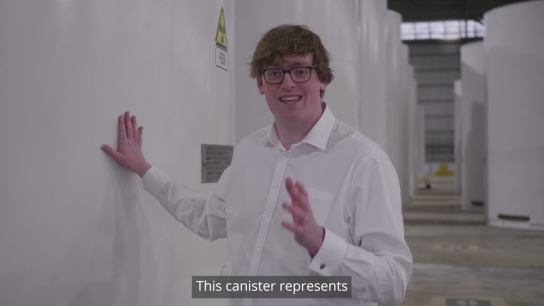
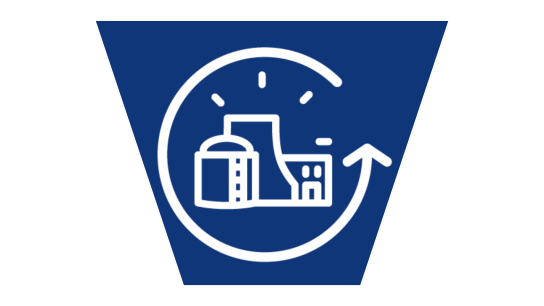
Spent fuel is produced in such small amounts that the total volume from an average person's lifetime electricity needs could fit into a drinks can
The change from "wet" to "dry" storage
In our original plans we decided to propose a wet fuel store, rather than a dry fuel store. Our decision was based upon the operational experience at the time which showed no clear difference in terms of performance or safety between the two technologies, but wet stores were considered easier to inspect.
Now, with greater operational experience in the UK and globally, the advantages of dry storage over wet storage have become clear and has driven the decision to propose this change.
A dry fuel storage system is based on passive cooling, which uses natural airflow to cool sealed, concrete and steel canisters. This passive safety method is preferred because it does not require operator intervention or complex mechanical and electrical systems.
The canisters used in dry storage provide the same levels of safety and environmental protection as a wet store. The canisters are very robust and are designed to withstand external hazards. They can even be approached without any protective clothing.
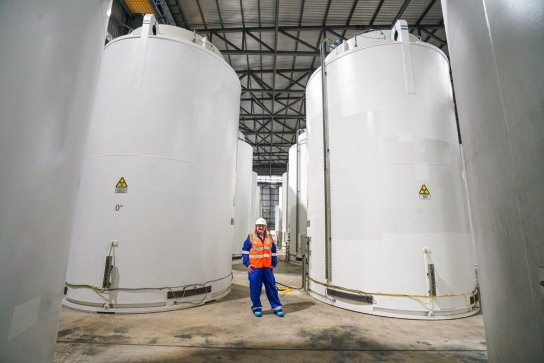
Explore Sizewell B's spent fuel store
In a dry-store, spent fuel is stored in very strong steel cannisters inside a building.
Compared to wet-storage, a dry-store provides benefits in terms of reduced maintenance and greater passive safety that does not require any operational intervention. Dry storage technology has been used worldwide since the 1970s and tests on spent fuel canisters after decades of use has confirmed that the system continues to provide a very safe and secure option.
Changes to the building's size and a new equipment storage building
The proposed change to the fuel store does not alter the quantities of spent fuel produced by the operational power station. There is no change to the radiological impact to members of the public or to the wider environment. The Environment Agency approved the environmental permit for this change in 2022.
One of the main differences between the two storage methods is that a larger building will be required for dry storage. It will be 79m longer, 8m wider and 5m taller to give the space needed for the canisters and enable easy access and maintain good airflow.
The proposed building would be visible by users of the coastal footpath. However, it would be seen against the backdrop of the much larger Reactor Buildings and the rest of the operational Hinkley Point C site.
The 55m high stack is no longer required for a dry fuel store, reducing the visual impact of the building.,
Equipment Storage Building
We plan to remove the Access Control Building associated with the spent fuel store and replace it with a new, larger Equipment Storage Building in a similar location. The equipment store would remain small in the context of the surrounding buildings and be 31m long, 23m wide and 18m high.

What is Spent Fuel?
Spent fuel is a description for the uranium fuel assemblies that have been used in the reactor and removed during regular refueling. At Hinkley Point C, these fuel assemblies removed from the reactor will first be cooled underwater in a reactor fuel pond for up to 10 years.
The reactor fuel ponds are not designed for the full life-time arisings of spent fuel so following this initial period they need to be transferred to an interim spent fuel store. It is called an “interim” fuel store as they will only be kept at the power station until the UK’s new, long-term geological disposal facility is ready.
The process can be broken down into stages:
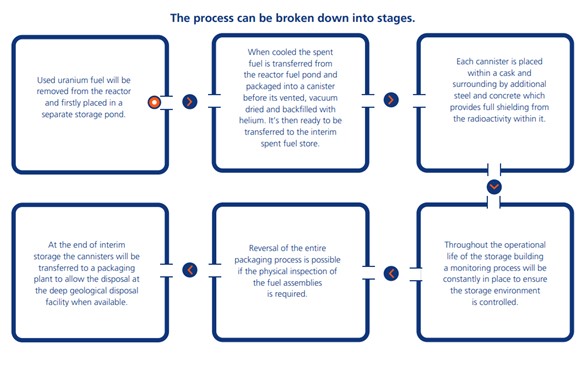
Dry fuel storage has been used for many years at sites across the world, including the UK, USA, Canada and Germany. In the United States more than 2,400 canisters have been loaded and are safely storing 100,000 spent fuel assemblies. Tests on spent fuel and cask components after years in dry storage confirm that the systems continue to provide a safe and secure environment for the waste products.
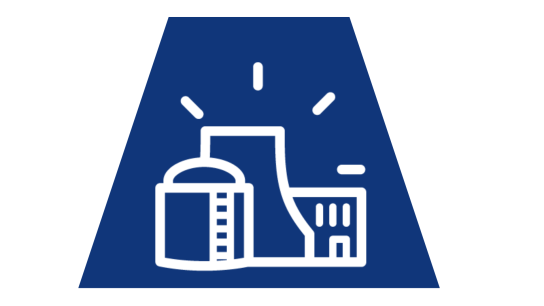
An independent view on waste
Mark Lynas is an environmentalist and author of several books on the pressing need to tackle climate change. He recently visited Sizewell B’s spent fuel store, publishing an article which summarised his experience.
Other types of waste and storage
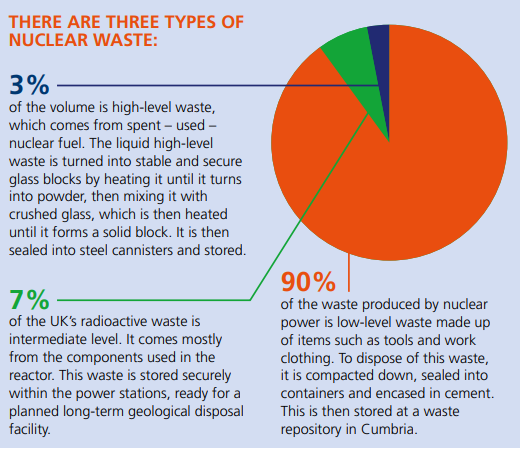
Radioactive waste gives off heat, so it needs to be carefully and safely managed. Most of this radioactive waste is low-level – this means its radioactivity is minimal and short-lived.
A very small amount of high-level waste is produced from the substances left over after the nuclear reaction itself. This waste needs to be shielded from people and the environment for many years.
The amount of high-level waste produced by a nuclear power station is very small indeed. It accounts for 95% of the total radioactivity but just 1% of the volume. After 75 years of atomic research and electricity generation, there is just a dishwasher tablet (20 mL) of high-level waste for every person in Britain
The way in which waste is managed depends on how radioactive it is. There are three main categories of radioactive waste and one for spent fuel.
Further information
Further information on the proposals for Hinkley Point C's spent fuel storage are available within the consultation overview document and supporting technical reports.
Contact us
The best way to contact us about Hinkley Point C is by completing our online enquiry form. You can also call us on 0333 009 7070 (24 hour free phone number).
For EDF's 24/7 media enquiry line call 01452 652233.